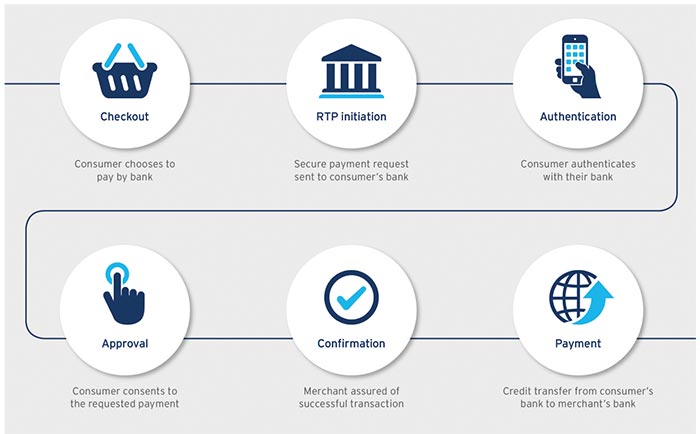While the media may be full of talk of cryptocurrencies and blockchain, a quiet revolution in payments is gathering momentum: the emergence of real-time Request to Pay (RTP) collections. Regulators are creating open digital markets, merchants are reducing the friction and cost of collections, financial technology companies are building new services on top of banking rails and financial institutions are exploring new ways to deepen and enhance the customer relationship. Although the value proposition of RTP schemes may be significant for many corporations, particularly those engaged in eCommerce, they will be successful only if they meet the detailed needs of payment system users. Consequently, it is essential that treasurers engage with the wider industry to influence their development, with the potential to transform both C2B and B2B collections.
Key Points
- Request to Pay (RTP) schemes are emerging around the world as a new way to collect from consumers and businesses.
- RTP has potential benefits over existing card, direct debit and EBPP mechanisms: reduced costs, fraud and chargebacks, and better information.
- Even so, there are a number of potential issues to overcome, especially surrounding the customer experience as a result of Strong Customer Authentication (SCA).
- Merchants should be considering their C2B or B2B collection requirements, and determining use cases
- Corporate engagement with banks, fintechs and regulators is essential to ensure that RTP schemes meet corporate purposes.
- RTP is part of a broader transformation from batch to real time processing and a more open banking system.
RTP in practice
RTP is a collective term for schemes that trigger payments from bank accounts. In contrast with direct debits, RTPs are real-time and suitable for single or ad hoc payments. They do not require a static upfront mandate from the payer and are not subject to extended rights of revocation. RTP is effectively an upgrade of electronic bill presentment & payment (EBPP), enabling the payer to approve and execute a requested payment in real time.
RTP schemes work in a broadly similar way (see figure 1); however, schemes in each country are generally designed according to one of two models: a national clearing system to which banks are connected, such as UPI in India, and open banking, in which participating banks are accessible through application programming interfaces (APIs), such as PSD2 in Europe.
Fig 1 – RTP in practice |
Each model has pros and cons. For example, a central clearing system is more harmonised, but future developments may be more difficult to deliver. The open banking model is more flexible and extensible, but there is a risk of fragmentation. These models are not mutually exclusive, and it is likely that both will co-exist in some markets.
Sign up for free to read the full article
Register Login with LinkedInAlready have an account?
Login
Download our Free Treasury App for mobile and tablet to read articles – no log in required.
Download Version Download Version






























